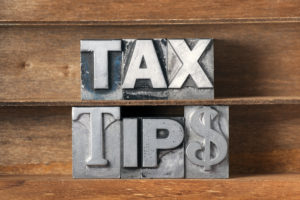Which Is Higher, Your Food Bill or Your Tax Bill?
How high is your tax bill? Would you say you spend more on taxes than you do on food? What about clothing and shelter; do you spend more on them than you do on your taxes? The answer might surprise you. That’s because in actuality you probably spend more on your taxes every year than you spend on all three of those things combined. That’s according to the Tax Foundation, which claims that Americans pays more in taxes every year than they do for essential necessities.
According to the Tax Foundation, Americans will pay $4.85 trillion in taxes in the year 2015 between federal and state taxes. That is approximately 31 percent of the country’s total income. Meanwhile, based on data from the Bureau of Economic Analysis the Tax Foundation estimates that the country will spend about $4.3 trillion in 2015 for basic necessities such as food, clothing and housing.
So do these numbers represent a real issue for the country and its citizens? That depends on how you look it. On the down side, the difference between spending on the basic essentials and taxes is getting worse. Whereas in 2012, the difference was about $150 billion, in 2015 it will likely be about $550 billion. That’s not a good sign. However, the Tax Foundation does not decipher spending between the different classes, so the number could be somewhat misleading.
In any case, there is no question that Americans are paying a hefty tax bill every year and the numbers would appear to indicate that that tax bill is only going to continue to rise. If you are interested in learning more about keeping your tax bill as low as possible, then contact us at GROCO today at 1-877-CPA-2006, or click here.
Professional Athletes Could Be Getting a Big Tax Victory in Cleveland
Professional Athletes Could Be Getting a Big Tax Victory in Cleveland Millions of sports fans all over the country love their favorite teams and athletes. A large majority of professional athletes from all walks of the sporting world make a lot of money and are some of the highest paid individuals in the country. While…
How to Choose an Investment Advisor
How to Choose an Investment Advisor Finding a reliable source for investment advice has always been a challenge. It’s especially difficult in today’s investment environment. There’s no shortage of places to turn for advice. The shelves at the bookstores are filled with “experts” offering their perspectives on how and where to invest. The financial pages…
Here’s a 15-item checklist of low-hanging tax tips for financial advisors
Here’s a 15-item checklist of low-hanging tax tips for financial advisors It’s tempting to put April 15th behind you, but here’s how you can plan for next year: With April 15th behind us, many people put tax issues onto the back burner until they’re staring at the next deadline. Alan Olsen, managing partner at Greenstein,…
How To Stay In Control Of Your Company
How To Stay In Control Of Your Company Have you ever watched the popular ABC program Shark Tank? This “reality” show allows entrepreneurs and business owners to pitch their business ideas or products to five extremely wealthy investors who are successful entrepreneurs in their own right. The panel of “shark” investors even includes Dallas Mavericks’…



